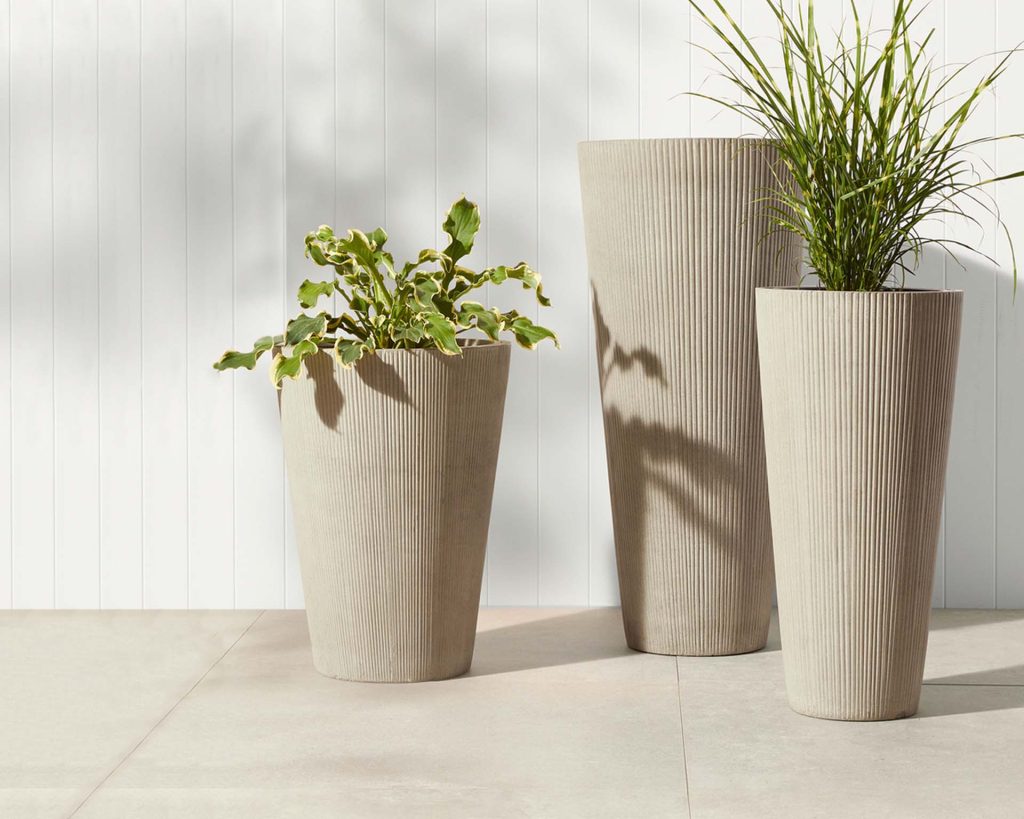
Design-Led Pottery Trends Shaping UAE Landscapes in 2025
Pottery has become a defining feature in modern landscaping. Across the UAE, landscape architects and project leads are no longer treating planters as afterthoughts — but as intentional design tools that influence space, texture, and flow.
Now in 2025, the demand for clean lines, material resilience, and context-aware design is steering planter selection across commercial, hospitality, and civic landscapes. Below are the pottery design trends shaping the year ahead — created for those who design with purpose.
1. Oversized Planters as Spatial Anchors
Large-scale pottery continues to be favored for its ability to define boundaries and create visual rhythm. Positioned at entrances, along walkways, or around seating zones, these statement pieces bring structure without requiring architectural intervention.
Used with structured greenery or small trees, oversized planters simplify spatial zoning while keeping the landscape open and fluid — ideal for hospitality and mixed-use environments.
2. Matte and Textured Finishes for Visual Balance
In 2025, reflective finishes are giving way to matte surfaces and natural textures. Soft tones like sand, clay, and charcoal are increasingly favored for their ability to blend with hardscapes while letting the greenery stand out.
Texture — whether stone-like, etched, or slightly irregular — adds depth without visual noise. These finishes not only work well with light and shadow in UAE’s outdoor environments, but also support a quieter, more timeless aesthetic.
3. Modular and Tiered Systems for Urban Flexibility
As space becomes more valuable, designers are choosing modular planter sets that offer versatility in both placement and planting.
Tiered layouts — where pots of varying height or diameter are grouped together — create vertical interest and soften hard edges. This approach is especially effective for rooftops, courtyards, and pedestrian-focused streetscapes, where greenery needs to be both compact and impactful.
Modular pottery also helps designers build rhythm and repetition across larger areas while maintaining a cohesive, curated feel.
4. Planters That Align with Architecture
Planters in 2025 are being selected not just for plants, but for their relationship to the architecture. Whether echoing façade geometry or contrasting with soft planting beds, the right form enhances the built environment.
Tapered cylinders, flared cones, and sharply defined rectangles are popular among minimalist and contemporary projects. These profiles complement straight lines and structured materials without competing for attention.
When specified early in the design phase, pottery becomes a seamless extension of the building — not a late-stage addition.


5. Made for the Climate, Built for the Region
In the UAE, planters need more than just aesthetic appeal — they must perform under intense heat, high UV exposure, and occasional saline environments.
That’s why many developers and landscape professionals are now prioritizing locally made pottery that’s designed with these environmental demands in mind. UAE manufacturing not only improves project lead times but also ensures material compatibility with regional climate conditions.
Choosing regional production also allows for better control over sizing, finish consistency, and communication throughout the project.
6. Custom Finishes for Project Cohesion
More designers are requesting custom pottery finishes, dimensions, and forms to align with broader project goals. Whether the goal is brand expression or spatial cohesion, tailored pottery plays a quiet but essential role.
Custom specifications may include:
- Matching finish tones to façade materials
- Adjusting pot height or diameter for specific plant species
- Designing shape profiles to suit limited zones or design guidelines
By working with a local manufacturer like Desert Pottery, design teams benefit from greater flexibility, faster sampling, and tighter execution — all critical in fast-moving commercial projects.
7. Material Selection: GRP vs Ceramic vs Clay
Beyond aesthetics, material choice directly impacts planter durability, weight, and performance.
- GRP (Glass-Reinforced Plastic) is lightweight yet strong, making it ideal for large-scale commercial applications. It’s UV-resistant, non-porous, and won’t crack or chip easily in outdoor conditions.s
- Ceramic pots are elegant and timeless but better suited to shaded or semi-protected areas, as they can be fragile under extreme conditions.
- Clay pots offer breathability and a natural aesthetic but may require sealing or lining to survive long-term exposure to heat and moisture.
For high-traffic hospitality or landscape-heavy commercial projects, GRP continues to be the most versatile and durable choice — especially when combined with custom finishes.

Closing Thoughts
Design-led landscapes rely on well-balanced elements — and in 2025, pottery is a core part of that equation. From defining flow to anchoring softscapes, the right planters bring clarity, structure, and texture to outdoor environments.
At Desert Pottery, we work closely with landscape architects and project teams across the UAE to deliver pottery that’s crafted for the region — and built to last.
If you’re designing with purpose, we’re here to help bring it to life.
Download our latest catalogue or speak with our specialists to explore materials, finishes, and forms crafted for UAE landscapes.


